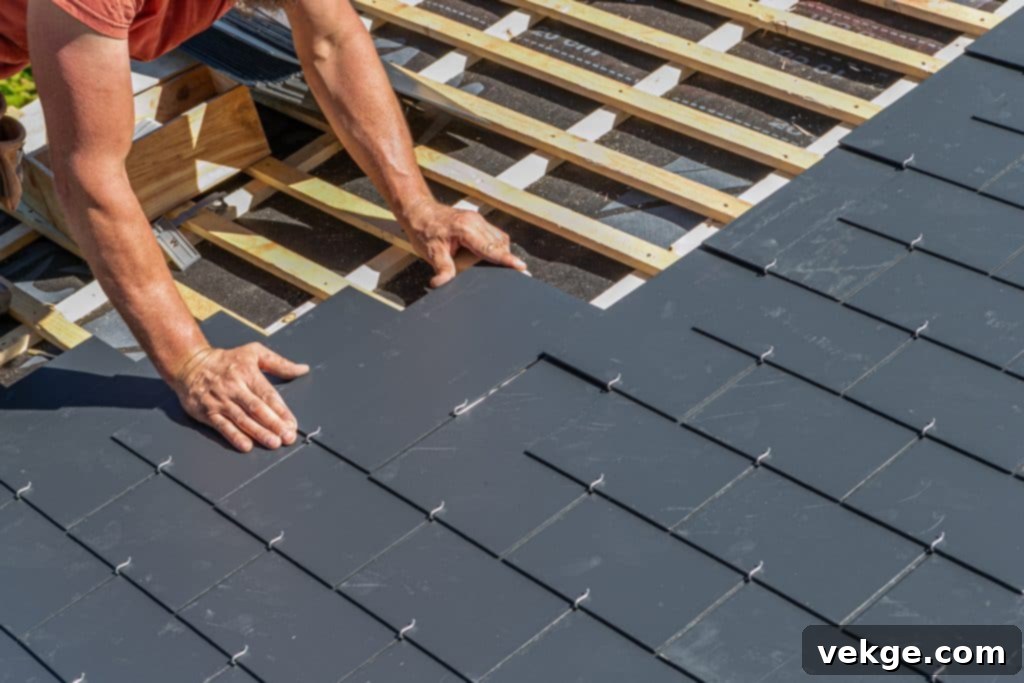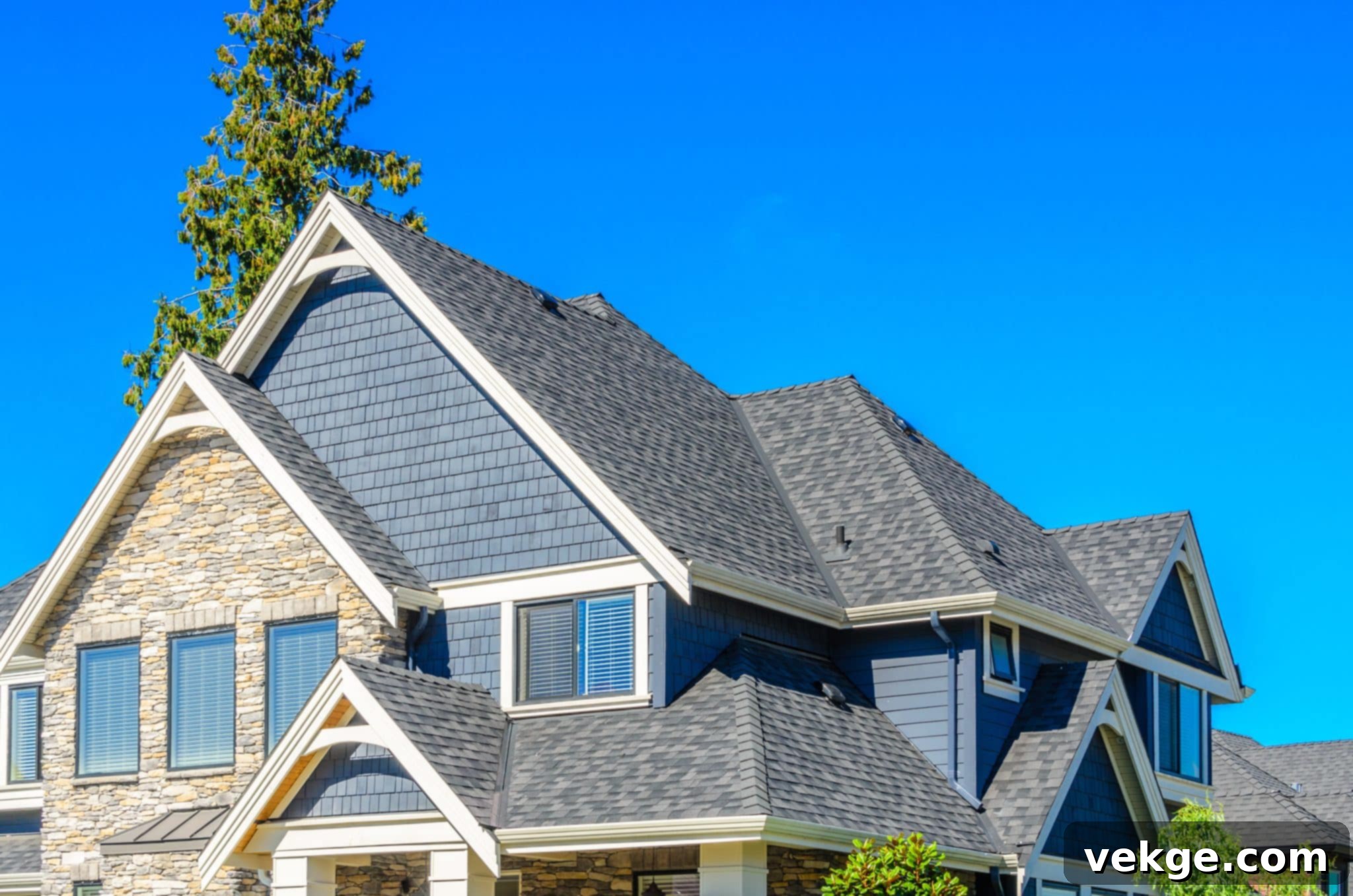Choosing the Best Roofing Material for Your Home: A Comprehensive Guide to Durability, Cost, and Style
Imagine pulling into your driveway after a demanding day, only to spot a new damp stain on your ceiling. It’s a stark reminder that your roof, your home’s primary line of defense, is showing signs of distress. The mere thought of chasing down leaks, budgeting for repairs, and navigating the complexities of roof replacement can be overwhelming. While a minor patch of exposed underlayment might not seem urgent, it’s often a precursor to bigger problems, suggesting a major leak could be just around the corner.
Selecting the right roofing material for your home is one of the most significant decisions you’ll make as a homeowner. It directly impacts not only your immediate expenses but also long-term maintenance costs, energy efficiency, curb appeal, and even your property’s overall value. This comprehensive guide will walk you through the essential factors, from practical considerations like climate and budget to equally vital aspects like aesthetics, sustainability, and durability, ensuring you make an informed choice that provides lasting peace of mind.
Understanding Your Needs for the Perfect Roof

Before diving into specific materials, it’s crucial to assess your unique situation. Are you embarking on a new construction project, or is this a much-needed replacement for an aging or damaged roof? This fundamental difference will influence your budget, preferred aesthetic, and even the structural requirements of your home. A new build offers more flexibility, allowing you to design around your chosen material, while a replacement might involve matching existing architectural styles or addressing underlying structural issues.
For existing homes, a thorough inspection is your first step. Look for common signs of wear such as missing or cracked shingles, bare spots, excessive granule loss, or signs of water damage in the attic or ceilings. Consider the age, architectural style, and size of your home. For example, a sprawling ranch-style house might benefit from different roofing materials than a multi-story modern home, which could be perfectly suited for contemporary metal roofing options. Critically, establish a realistic budget that encompasses not just material costs, but also labor, disposal fees, and potential contingencies for unforeseen repairs.
Beyond the practicalities, clarify your personal priorities. How important is an extended lifespan and exceptional durability to avoid frequent, costly repairs every few years? Are you prepared to invest more upfront for a roof that offers superior protection and longevity? Does energy efficiency rank high on your list, allowing you to leverage long-term savings on utility bills? Carefully weigh benefits like enhanced sustainability, effective noise reduction, superior fire resistance, and increased property value. Your answers to these questions will significantly narrow down your choices.
Exploring Your Roofing Material Options
Each roofing material boasts distinct features, performance characteristics, and aesthetic appeals. Let’s delve into the most common roofing options, highlighting their unique advantages, disadvantages, and associated costs, to help you understand what might be the best fit for your home.
-
Asphalt Shingles
Asphalt shingles remain the most popular choice due to their affordability and versatility. They are generally the most budget-friendly option for installation, making them accessible for many homeowners. Modern asphalt shingles, especially architectural or dimensional varieties, feature embedded mineral granules that add depth, texture, and a more premium look. While their typical lifespan ranges from 20-25 years, higher-grade, laminated, or impact-resistant versions can extend this to 30 years or more. Costs vary based on factors such as shingle thickness, wind resistance ratings, and brand quality. They are relatively easy to install, but can be susceptible to damage from extreme winds, hail, and fluctuating temperatures.
-
Metal Roofing
Renowned for their exceptional longevity and performance, metal roofs can last an impressive 50-70 years, often outliving the home itself. Thanks to advanced coating technologies, they are excellent at shedding snow and ice, preventing damaging ice dams, and reflecting UV rays, which significantly reduces heat transfer into your home and lowers cooling costs. While the upfront cost for bare metal or stone-coated steel styles is higher than asphalt, this investment is often offset by decades of near-zero maintenance and superior energy savings. Metal roofs are also incredibly durable, fire-resistant, and can be made from recycled materials, contributing to sustainability.
-
Concrete Tiles
Concrete tiles offer outstanding durability, capable of withstanding harsh weather conditions for more than 50 years. Their heavyweight construction makes them incredibly resilient, though it does necessitate a robust roof support structure. Available in a variety of profiles—from flat to S-shaped—and natural earth tones, concrete tiles lend a distinctive Mediterranean, Spanish, or contemporary curb appeal. They are also fire-resistant and provide good insulation. Pricing typically starts around USD$10 per square foot installed, varying with style and complexity. While durable, they can be brittle and may crack under heavy impact.
-
Wood Shakes and Shingles
Wood shake and shingle roofs provide a warm, rustic, and highly appealing aesthetic that many homeowners cherish. Naturally moisture-resistant woods like cedar, redwood, or cypress hold up significantly better than pine in rainy or humid climates. Shakes are hand-split, offering a thicker, more textured appearance, while shingles are sawn for a smoother, more uniform look. Expect to replace them every 10-30 years, depending on climate, maintenance, and wood type, with costs ranging from USD$8-15 per square foot. They require more maintenance to prevent moss and rot and are not as fire-resistant as other materials unless treated.
-
Slate Roofing
At the pinnacle of the price spectrum, natural slate roofing typically costs USD$15-30 per square foot but delivers unparalleled beauty, longevity, and prestige. Its complex installation, combined with high material costs, positions it as a premium option. However, slate’s natural elegance, fireproof qualities, and remarkable 100-year lifespan (or even longer) make it a highly desirable choice for those seeking ultimate durability and timeless curb appeal. While incredibly durable, slate is also heavy and brittle, requiring specialized handling and installation.
-
Other Emerging and Sustainable Options
For environmentally conscious homeowners, green roofs allow you to create an eco-friendly oasis, though they come with higher upfront costs and ongoing maintenance. They offer numerous long-term benefits, including enhanced energy efficiency, effective stormwater management, improved air quality, and mitigation of urban heat islands. Another innovative option gaining traction is solar roofing tiles, which integrate photovoltaic technology directly into the roof material, providing both shelter and clean energy generation. While these options are more specialized, they represent the cutting edge of roofing technology.
Beyond material choice, critically factor in regional climate challenges such as heavy snow loads, hurricane-force winds, intense solar radiation, or persistent humidity. For instance, steeper-pitched A-frame homes are better suited for heavier materials like concrete tiles or slate, which handle snow runoff effectively, whereas low-slope roofs might require specialized rolled asphalt or single-ply membrane systems. Always remember to confirm that your chosen roofing products and installation methods comply with local building codes and obtain the necessary permits. Roof maintenance needs vary significantly, from occasional visual inspections and gutter cleaning to very hands-on upkeep, such as replacing worn wood shingles every decade or so, which impacts the total cost of ownership.
Comparing and Choosing the Optimal Roofing Solution
With your priorities clearly defined and a thorough understanding of each material’s unique characteristics, you’re now equipped to compare options and determine the optimal roofing solution for your home. Use the following comprehensive criteria as your guiding framework:
- Material Composition: Understand the actual make-up, whether it’s asphalt composite, solid wood, concrete blend, natural slate, or advanced metal alloys.
- Durability & Lifespan: Evaluate the expected functional lifespan under your specific local climate conditions, considering factors like wind, hail, UV exposure, and temperature fluctuations.
- Total Project Cost: Obtain a detailed estimate that includes material costs, labor, permits, old roof removal, and any necessary structural reinforcements. Consider both the upfront investment and the long-term cost of ownership.
- Energy Efficiency: Assess the material’s ability to reflect UV rays, insulate against heat transfer, and contribute to lower heating and cooling bills. Look for ENERGY STAR ratings or cool roof certifications.
- Aesthetics & Curb Appeal: Consider how the material’s color, texture, and profile will complement your home’s architectural style and enhance its visual appeal.
- Maintenance Requirements: Understand the ongoing upkeep and potential repair needs over the roof’s lifespan. Some materials require more frequent cleaning or treatment than others.
- Environmental Impact: Investigate sustainability factors, including the material’s sourcing, manufacturing process, recyclability, and end-of-life disposal implications.
Cross-reference your absolute must-have features against your established budget ceiling. Crucially, consult qualified local roofing companies for recommendations tailored to your specific situation. Experienced contractors can provide invaluable insights into how regional climate patterns, common building styles, and local regulations may favor certain materials as the ‘best’ choice for your area. Always obtain multiple itemized estimates in writing, scrutinize contractor credentials, and thoroughly compare warranties for both materials and labor before making your final decision. Don’t hesitate to ask for references or to view examples of their previous work.
Beyond the Basics: Maximizing Your Roof’s Value and Longevity
Once you’ve made your decision on a roofing material, consider additional strategies to maximize its impact on your home’s value. High-end materials like slate or standing seam metal roofs often provide a greater return on investment, increasing property value beyond their initial price tag. Explore newer reflective coatings or advanced solar shingles that leverage cutting-edge technology, not only for energy savings but also for potential tax credits and environmental benefits, often diverting scrap roofing from landfills.
Regardless of your chosen material, never neglect post-installation maintenance. Implement a schedule for periodic visual inspections, ideally twice a year (spring and fall). Regularly clear debris from gutters, downspouts, and the roof surface to prevent water pooling and potential damage. Promptly address any minor issues you detect, such as cracked tiles, loose flashing, or damaged sealants, before water has a chance to seep underneath and cause more significant structural damage or mold growth.
Proactive care and timely repairs are key to ensuring your roof endures for its expected lifespan, allowing you to fully realize your investment. Detecting problems early and addressing them wisely can extend your roof’s functional performance for another decade or even more, providing continuous protection and enhancing your home’s integrity.
Conclusion: Investing in Your Home’s Future
Choosing the ideal replacement roofing material for your home is a significant investment and a decision that demands careful consideration of your unique needs, local climate, budget constraints, and long-term priorities. By thoroughly weighing each roofing type’s pros and cons against your specific situation, you empower yourself to make a decision that will benefit your home for decades to come.
Remember to consult with qualified local roofing companies, leverage their expertise, and compare multiple detailed estimates to ensure you are receiving the best value and quality. Investing the appropriate time and effort upfront in this decision-making process means you can look forward to years of lasting protection, enhanced curb appeal, improved energy efficiency, and the invaluable peace of mind that comes from making the optimal choice for your most valuable asset.
